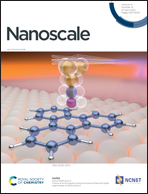Observation of high-density multi-excitons in medium-size CdSe/CdZnS/ZnS colloidal quantum dots through transient spectroscopy and their optical gain properties†
Abstract
Semiconductor quantum dots have extremely significant advantages in terms of optoelectronic devices. However, it is unfeasible to avoid the generation of charged exciton states during operation. Such states can change the radiation recombination rate and bring additional non-radiative Auger recombination channels. Herein, we synthesize high photoluminescence quantum yield medium-size CdSe/CdZnS/ZnS core/alloy shell/shell QDs. Their multiexciton spectra and dynamics were systematically studied by pump-power-dependent fluorescence blinking and time-correlated spectroscopy. The lifetimes of positively/negatively charged trions and biexcitons are estimated to be 0.74/6.1 and 0.16 ns, respectively. It demonstrated that the band-edge biexciton is influenced by the Coulomb interaction and Stark effect. The amplified spontaneous emission threshold is only 81 μJ cm−2 and can retain a long operation lifetime under continuous pumping. A vertical microcavity surface-emitting laser device is fabricated using these QDs. The coupling factor between the spontaneous emission and cavity mode is 0.81, which benefits the low stimulated emission threshold. This work provides a new perspective of the charged states in the multiexciton AR process in the QDs, implying a promising application prospect of such QDs as optical gain materials in “zero-threshold” laser fabrication.



 Please wait while we load your content...
Please wait while we load your content...